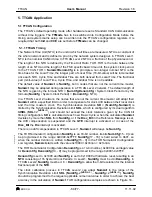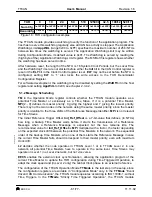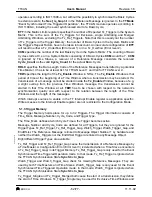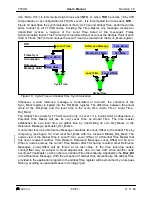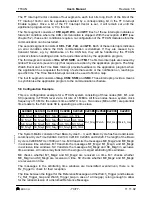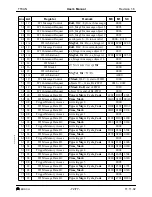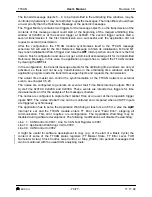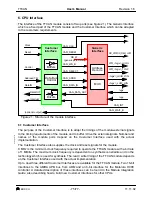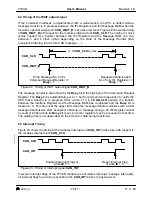
User’s Manual
BOSCH
- 74/77 -
Revision 1.6
TTCAN
11.11.02
manual_about.fm
The transmit message objects 5
…
6, to be transmitted in the arbitrating time windows, may be
controlled dynamically or may be restricted to specific messages. Their identifiers should have
a lower priority than the Reference Message or the periodic messages.
The Trigger Memory contains two triggers for the message object 5, so the transmission of the
contents of this message object could start at the beginning of the merged arbitrating time
window at 0x0280 or at the second trigger at 0x0320. The second trigger cannot start a
second transmission if the first transmission was successful and the application did not
request a second transmission.
After the configuration, the TTCAN module synchronises itself to the TTCAN message
schedule. S0 will wait for the first Reference Message to finish its initialisation. M0 and M1
may reach Initialisation Watch Trigger and raise the IWT interrupt when one of them is the first
node to finish configuration and does not get a dominant acknowledge bit for its transmitted
Reference Message. In this case, the application program has to restart the TTCAN module
by clearing the IWT bit.
In the configuration, the transmit message objects for the arbitrating time windows are not yet
activated, so there will not be any transmissions in the arbitrating time windows until the
application program loads the transmit message objects and requests the transmission.
The actual time master can control the synchronisation of the TTCAN network to external
events, see chapter 3.5.23.
The nodes are configured to generate an event at their Time Mark interrupt outputs TMI at
Cycle Time 0x0100, 0x0200, and 0x0300. These events are intended as triggers for time
measurements and for the analysis of the message schedule.
The nodes are configured to capture their Global Time at an event at their stopwatch trigger
inputs SWT. The nodes’ Global Time can be monitored and compared when all SWT inputs
are triggered synchronously.
The application has to serve the Application Watchdog at least once in 65 ms, else the ApW
interrupt is set and the TTCAN module enters TT Error Level “Fatal Error”, stopping all
communication. This error requires a re-configuration. The Application Watchdog may be
disabled during software development. The following modifications will disable the watchdog:
Line 1 : CAN Control to 00C1; Line 1a: CAN Test Register to 0001
Line 10 : Application Watchdog Limit to 0000
Line 99 : CAN Control to 0082
It might be useful for software development to copy (e.g. at the start of a Basic Cycle) the
content of some of the TTCAN status registers (TT Master State, TT Error Level, TUR
Numerator Actual, Clock Control, Gap Control, or Stop_Watch) into periodic messages that
can be monitored with the usual CAN analysing tools.

